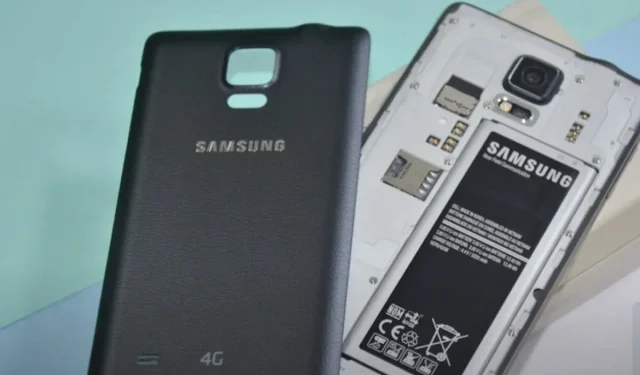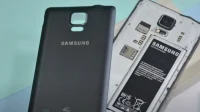There may be times when you cannot use your SIM card and cannot find reception. In most cases, this is mainly due to the lack of a proper network connection or incorrect network settings on your phone.
However, there may be times when you also get the No SIM card error message on your phone. This may be due to several reasons. In addition, there are several ways to solve this problem.
Before you understand how to solve this problem, you may also want to know why and how this happens on your Android.
Why does my phone say “No SIM card”error on Android?
One of the main reasons why your SIM card cannot be read by your phone is because it is either damaged or there is a software problem in the phone itself. What’s more, if there is debris or dirt on the SIM tray, your phone may not be able to read them either.
However, fixing your network settings or software or checking your hardware is the easiest solution. However, if none of these methods work for you, you can contact your carrier directly or have it replaced.
How to Fix When Phone Says “No SIM Card”on Android
- Reboot your phone
- Update your Android
- Set up your SIM card
- Remove the battery
- Inspect the SIM tray
- Perform a factory reset
- Clear cache and other data
- Reset network settings
- Reinsert the SIM card
- Select an operator manually
- Removing apps
- Turning airplane mode on or off
- Contact Customer Service
1. Reboot your phone
This is one of the first and fastest solutions to fix your phone saying “No SIM card”. You will have to turn off your phone and make sure it is not connected to another power source.
However, by pressing the power button, you can turn it off or restart it. If your Android phone has a removable battery, you can turn it off for a few minutes and remove it.
After a few minutes, you can put it back and turn your phone back on. Rebooting your phone will usually help restart your device and also establish a stable network connection.
This can resolve the “SIM Card Not Detected”error on your Android. However, you also need to make sure your location has good reception so that you can easily access a stable network connection.
2. Update your Android
Updating your device is necessary again and again as it helps to eliminate some crashes and errors. Sometimes some normal settings also fail or don’t work due to bugs in the device.
Therefore, you can download updates and turn on the “Download updates automatically”option. Go to “Settings”on your Android and look for “Software Updates”. You will be able to see if a new update is available for you.
Alternatively, you can also enable the “Download updates automatically”option, so you don’t have to install it manually.
3. Set up your SIM card
In addition to problems with your phone’s software, you can also check for possible hardware defects. So make sure your SIM card is in the right place on your phone so you can connect to a stable network.
Slight displacement of the SIM card can lead to this issue. Hence, you can solve this problem by installing the card correctly or by adjusting it. You can also take out the SIM card and put it back in.
Make sure it fits properly into the slot itself, with some tape or paper to help you fix the problem. After that, you can restart your phone and check if the issue is resolved.
4. Remove the battery
This method usually depends on your phone model. Even though some new Android models with batteries cannot be ejected, if your model has this feature, you can try it to solve the problem.
You can turn off your phone for a few minutes and remove the battery. You also need to make sure that your phone is not connected to a power source. You can wait a few seconds and then insert it back.
Once you do that, turn on your phone and check if the problem is still there. One of the main reasons why this method works the best is because it can fix errors and turn the device off and on again.
5. Inspect the SIM tray.
Sometimes the problem may be related to the SIM tray and not the SIM card itself. This can also be one of the main reasons why you keep getting “No SIM Card” error on your phone. However, you can easily fix this problem by adjusting the SIM card and tray.
You can easily adjust the SIM tray with some pressure or foam application. Removing the back cover and attaching it to the SIM card area is easier.
As mentioned in the method above, you can also use paper or other pressure to adjust the tray and SIM card.
6. Perform a factory reset
Before performing a factory reset, you need to back up all your pictures, videos, contacts, and other data. All default settings will be restored, meaning all your data will be deleted.
You can easily reset your phone through settings. You can follow the steps below to perform a hard reset to resolve the issue.
- Go to settings.
- Find “Backup and Reset”.
- Click Factory Data Reset.
Once you do this, your default settings will be restored, which will also mean that your network settings will be restored. However, if you don’t need to reset the entire device, you can reset network settings.
7. Clear cache and other data
Sometimes your device may experience problems due to lack of storage space. Basically, this will mean the accumulation of unwanted residual data or cache. It may also take longer to clean up, but at the same time it is an integral method, especially if there are any glitches.
Clearing the cache and data will also help you free up more space on your phone, and you may have to log into certain apps again. However, this often helped solve several problems; You can follow the steps below to clear data and cache from your Android.
- Go to “Settings”and go to “Storage”.
- Click Internal storage.
- Select Cached Data.
- Click “Clear”after that.
Once you do this, all your apps or shared cache stored on your device will be deleted. You can then check if your SIM card is working. If that doesn’t work, you can try restarting your device and check if the issue is resolved.
8. Reset network settings
As mentioned earlier, you can simply reset your network settings if you don’t want to do a hard reset. This will prevent you from backing up the data you have and also restoring all default settings on your device.
Resetting network settings will mean that you are directly trying to solve the problem with the “No SIM card”error. You can follow the below steps to do it
- Go to “Settings”and click on “Backup and Reset”.
- Select reset network settings.
After you touch this, your network settings will return to their defaults and you will be able to fix the problem with the SIM card as well. This works best, especially if you recently changed your SIM card or moved it in the SIM tray.
9. Reinsert the SIM card
Make sure your device is turned off before removing the SIM card. This is an essential part as your device may be damaged if you remove the SIM card without turning off the device.
Most recent models have the SIM tray next to the power or volume buttons. In this case, removing it is much easier. However, for older versions of Android, you will have to first turn off the device and remove the battery in order to remove the SIM card.
After removing the SIM card, you can wait a few seconds and then reinsert it. After that turn on your device and check if you can connect to a stable network.
10. Select an operator manually
Due to certain software updates, some settings on your device may change. For this reason, you should also check this when trying to fix a problem. If you change certain settings, you may also not be able to connect to the network.
This is one of the main reasons why choosing a carrier or network operator manually can help resolve the No SIM card error on your phone.
You can manually select an operator by following the steps below.
- Go to “Settings”on your phone.
- Go to your wireless and networks settings.
- Click “Mobile networks”.
- Select Network Operators and search for networks manually.
Once you select the carrier or network operator you want to connect to, you can also fix the “SIM Card Not Detected”error.
11. Uninstall apps
Sometimes, due to some third party applications, you may encounter the problem that your SIM card cannot be detected. Hence, you can run Safe Mode on your device which will help you fix any problem with third party apps on your phone.
Most importantly, you can uninstall an app that may be taking up more space on your phone. If you resolve this issue, you will also be able to determine if these third-party apps were the root cause of your No SIM card error.
12. Turn airplane mode on and off
Turning your phone’s airplane mode on and off can also help you reconnect to the receptionist. Once you turn on Airplane Mode, all cellular reception and broadcasts are turned off as well.
You can easily access the Settings option through the notification center by swiping down from the top of the screen. After a few seconds, you can turn it back on.
13. Contact support
When trying to resolve a SIM card issue, you must also ensure proper reception. Sometimes you may encounter a problem because your SIM card cannot connect to a stable network.
However, if the network is fully functional for other devices or SIM cards, you can directly contact the support service of the SIM card operator and check what is causing this problem. You can also replace the SIM card in case of physical damage.
Conclusion
When trying to fix the “SIM Card Not Detected”message on your phone, there could be several reasons. Hence, you need to check them first. Once you understand the root cause of this issue, you can easily fix it.
You may need to check third-party apps or software updates to fix this issue. However, in most cases, you may need to inspect the SIM card and tray. One of the main reasons for this is that physical damage to the SIM card is the main cause of these problems.


